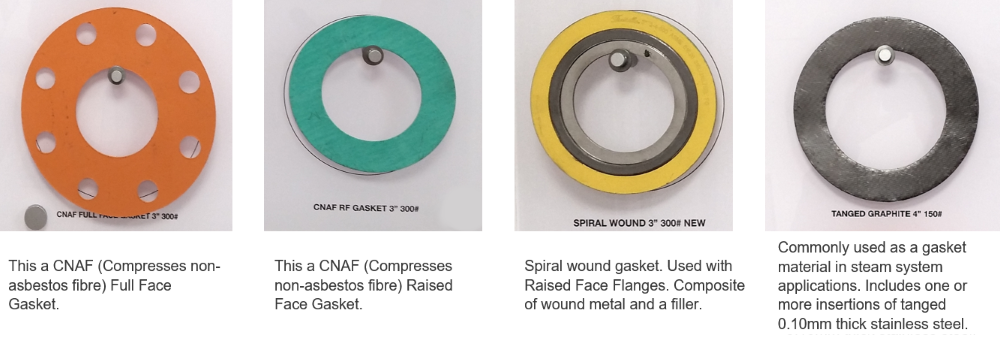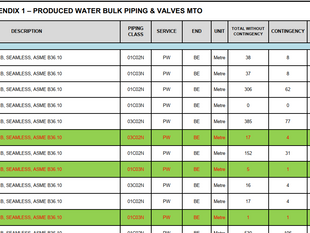

Gaskets and Procurement Challenges in Sealing Solutions: Exploring Types, Supplier Considerations, and Future Trends with AI Technology
Aug 27, 2024
7 min read
0
10
0
Table of Contents
Introduction
Understanding Gaskets and Their Applications
Types of Gaskets
Applications of Gaskets in Various Industries
Challenges in Gasket Procurement
Common Procurement Challenges
Supply Chain Management for Gaskets
Cost Factors in Gasket Procurement
Quality Assurance in Gasket Procurement
Solutions for Effective Sealing
Effective Sealing Techniques
Gasket Installation Best Practices
Innovative Sealing Solutions
Supplier and Quality Considerations
Choosing the Right Gasket Supplier
Gasket Quality Standards and Certifications
Managing Supplier Relationships
Market Trends and Innovations
Trends in Gasket and Sealing Technologies
Innovations in Gasket Materials
Future of Sealing Solutions
Future Trends and AI Technology in Sealing Solutions
AI in Gasket Design and Manufacturing
Predictive Maintenance with AI
Machine Learning Applications in Gasket Procurement
The Role of Automation in Sealing Solutions
Conclusion
FAQs
Introduction
Gaskets play a crucial role in a variety of industrial applications, serving as essential components for sealing solutions. Their primary function is to create a seal between two or more surfaces to prevent leakage of gases, liquids, or other contaminants. With the increasing complexity of industrial systems, the demand for high-quality gaskets has surged. However, this demand brings several procurement challenges that businesses must navigate. This article delves into the various types of gaskets, the challenges faced during their procurement, effective sealing solutions, and the future trends in gasket technology, especially with the advent of AI technology.
Understanding Gaskets and Their Applications
Gaskets are mechanical seals that fill the space between two or more mating surfaces. They are designed to prevent leakage of fluids or gases under varying conditions, such as temperature, pressure, and chemical exposure.
Types of Gaskets
Metallic Gaskets: These are made from materials like steel or copper. They are used in high-pressure environments such as oil and gas pipelines, chemical processing plants, and power generation facilities.
Non-Metallic Gaskets: Composed of rubber, graphite, PTFE (Polytetrafluoroethylene), or other materials, non-metallic gaskets are suitable for low to medium pressure applications. They are commonly used in water, oil, and gas pipelines.
Composite Gaskets: These are a combination of metallic and non-metallic materials. Composite gaskets offer a balance between strength and flexibility, making them ideal for a wide range of applications, including automotive and aerospace industries.
Spiral Wound Gaskets: Made from alternating layers of metallic and filler material, spiral wound gaskets provide excellent sealing performance under extreme conditions and are often used in petrochemical industries.


Applications of Gaskets in Various Industries
Oil and Gas: Used in pipelines and refineries to prevent leaks under high pressure and temperature.
Automotive: Essential for engine components to prevent oil, coolant, and gas leaks.
Aerospace: Used in fuel systems and engines to maintain integrity and prevent leaks in high-altitude conditions.
Chemical Processing: Required in environments involving corrosive chemicals to prevent leaks and ensure safety.
Challenges in Gasket Procurement
The procurement of gaskets is a critical process that involves several challenges, especially when considering the vast range of applications and the need for high-quality sealing solutions.
Common Procurement Challenges
Supply Chain Disruptions: Global events, such as the COVID-19 pandemic, have exposed vulnerabilities in the supply chain. Disruptions can lead to delays in the delivery of essential components, including gaskets, impacting production schedules.
Quality Variations: Sourcing gaskets from different suppliers may result in quality inconsistencies. Variations in material properties, dimensions, and performance can lead to leakage or failure in applications.
Cost Management: Balancing cost and quality is a significant challenge in gasket procurement. While cheaper gaskets may reduce upfront costs, they may not offer the longevity or reliability required for critical applications.
Compliance and Certification: Ensuring that gaskets meet specific industry standards and certifications can be challenging, especially when dealing with multiple suppliers across different regions.

Supply Chain Management for Gaskets
Effective supply chain management is essential for minimizing disruptions and ensuring a steady supply of high-quality gaskets. This includes building strong relationships with reliable suppliers, maintaining adequate inventory levels, and implementing robust quality control measures.
Cost Factors in Gasket Procurement
Several factors influence the cost of gaskets, including material type, manufacturing process, and volume requirements. Additionally, costs associated with transportation, tariffs, and customs duties can also impact overall procurement expenses.
Quality Assurance in Gasket Procurement
Quality assurance is a critical aspect of gasket procurement. This involves rigorous testing and inspection of gaskets to ensure they meet the necessary specifications and performance criteria. Partnering with suppliers who adhere to international quality standards, such as ISO 9001, can help mitigate the risk of quality issues.
Solutions for Effective Sealing
Effective sealing is crucial for the safety, efficiency, and longevity of industrial systems. Proper gasket selection, installation, and maintenance are key factors in achieving effective sealing.
Effective Sealing Techniques
Proper Gasket Selection: Choosing the right gasket material and type for the specific application is essential for effective sealing. Factors to consider include temperature, pressure, chemical compatibility, and flange type.
Surface Preparation: Ensuring that mating surfaces are clean, smooth, and free of debris is critical for achieving a tight seal. Surface imperfections can lead to leaks or gasket damage.
Correct Installation: Following manufacturer guidelines for gasket installation, including proper torque application and bolt tightening sequence, helps prevent over-compression or under-compression of the gasket.
Gasket Installation Best Practices
Use appropriate tools and equipment for gasket installation.
Ensure even compression across the gasket surface.
Avoid reusing old gaskets as they may have deformations or material degradation.
Innovative Sealing Solutions
Advancements in gasket materials and designs have led to innovative sealing solutions that offer improved performance, durability, and ease of installation. Examples include multi-layer gaskets, self-sealing gaskets, and gaskets with integrated sensors for real-time monitoring.
Supplier and Quality Considerations
Choosing the right supplier is critical to ensuring the quality and reliability of gaskets used in industrial applications.
Choosing the Right Gasket Supplier
Reputation and Experience: Look for suppliers with a strong reputation and extensive experience in providing gaskets for specific industries or applications.
Certifications and Compliance: Ensure the supplier adheres to industry standards and holds relevant certifications, such as ISO 9001, API, and ASTM standards.
Quality Control Processes: Evaluate the supplier’s quality control processes, including material testing, dimensional checks, and performance testing.
Gasket Quality Standards and Certifications
Several standards govern the quality and performance of gaskets, including:
ASME B16.20: For metallic gaskets used in pipelines.
API 6A: Specifies requirements for gaskets used in oil and gas production.
ASTM F104: Provides material property data for non-metallic gaskets.
Managing Supplier Relationships
Building strong relationships with suppliers is essential for ensuring a reliable supply of high-quality gaskets. This involves regular communication, joint problem-solving, and collaboration on quality improvement initiatives.
Market Trends and Innovations
The gasket and sealing solutions market is constantly evolving, driven by advancements in materials, technologies, and industry demands.
Trends in Gasket and Sealing Technologies
Environmental Sustainability: There is a growing demand for eco-friendly gaskets made from sustainable materials that offer high performance while reducing environmental impact.
Enhanced Durability and Longevity: New materials and designs are being developed to enhance the durability and longevity of gaskets, reducing maintenance costs and downtime.
Smart Gaskets: The integration of sensors and smart technologies into gaskets allows for real-time monitoring of gasket performance and predictive maintenance.
Innovations in Gasket Materials
Innovations in gasket materials are focused on improving performance under extreme conditions. For example, new composites and elastomers are being developed to provide better resistance to chemicals, high temperatures, and pressure.
Future of Sealing Solutions
The future of sealing solutions lies in the development of advanced materials, smart technologies, and improved manufacturing processes that offer higher performance, reliability, and cost-effectiveness.
Future Trends and AI Technology in Sealing Solutions
Artificial Intelligence (AI) is poised to revolutionize the gasket and sealing solutions industry by enhancing design, manufacturing, and maintenance processes.
AI in Gasket Design and Manufacturing
AI algorithms can analyze vast amounts of data to optimize gasket design for specific applications. This includes selecting the best materials, predicting performance under various conditions, and minimizing manufacturing defects.

Predictive Maintenance with AI
AI-powered predictive maintenance tools can monitor gasket performance in real time, detect early signs of wear or failure, and predict maintenance needs. This helps prevent costly leaks and downtime, enhancing the overall reliability of industrial systems.
Machine Learning Applications in Gasket Procurement
Machine learning algorithms can be used to analyze procurement data and identify patterns that lead to cost savings, improved supplier performance, and reduced lead times. This helps streamline the procurement process and enhance supply chain efficiency.
The Role of Automation in Sealing Solutions
Automation in gasket manufacturing and installation is becoming increasingly prevalent. Automated processes ensure consistent quality, reduce human error, and increase production speed. This trend is expected to continue as more companies adopt Industry 4.0 technologies.
Conclusion
Gaskets are vital components in industrial systems, ensuring effective sealing and preventing leaks. However, the procurement of high-quality gaskets presents several challenges that businesses must overcome. By understanding the types of gaskets, their applications, and the procurement challenges, businesses can make informed decisions to ensure reliable and effective sealing solutions. Furthermore, advancements in AI technology offer exciting opportunities for the future of gasket design, manufacturing, and maintenance, paving the way for more efficient and cost-effective sealing solutions.
FAQs
What are the different types of gaskets?
Gaskets can be categorized into metallic, non-metallic, composite, and spiral wound types, each suited for different applications based on pressure, temperature, and chemical exposure.
What challenges are associated with gasket procurement?
Common challenges include supply chain disruptions, quality variations, cost management, and compliance with industry standards.
How can AI technology benefit gasket procurement and sealing solutions?
AI can optimize gasket design, predict maintenance needs, streamline procurement processes, and improve overall supply chain efficiency.
What are the latest trends in gasket materials and technologies?
Trends include the development of eco-friendly materials, enhanced durability, smart gaskets with sensors, and automation in manufacturing processes.
How do I choose the right gasket supplier?
Consider factors such as the supplier's reputation, experience, certifications, compliance with standards, and quality control processes.
What role does predictive maintenance play in sealing solutions?
Predictive maintenance uses AI and sensors to monitor gasket performance in real time, detecting early signs of wear or failure to prevent leaks and reduce downtime.





